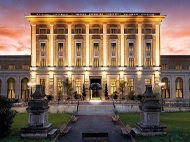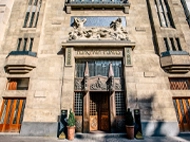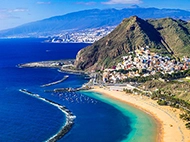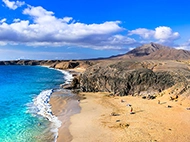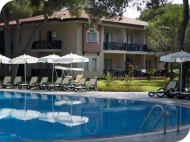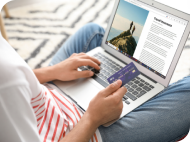-
Your money is secured in a trust account
Unlike many other travel companies we operate on a trust account model. Once we’ve paid the airline for your flights, the rest of your money is held in a trust account. We do not have access to this directly and can only withdraw funds when you are back home from holiday
-
We're ATOL protected
All of our holidays that include flights are protected by the ATOL scheme from the moment you book. So if one of our suppliers fails, you’ll get your money back. If you’re left stranded abroad, a flight home will be arranged at no extra cost. Our ATOL number is 11806
-
We're ABTA registered
As proud ABTA members we deliver the highest standards when it comes to our holidays. So if you book with us you’re guaranteed the best service. Our ABTA number is P8283, Y6720.
-
-
Holidays
- All inclusive holidays
- Beach holidays
- Cheap holidays
- Family holidays
-
Last minute holidays
- Last minute holidays
-
- Last minute holidays
- Algarve last minute holidays
- Croatia last minute holidays
- Egypt last minute holidays
- Greece last minute holidays
- Italy last minute holidays
- Majorca last minute holidays
- Mexico last minute holidays
- Spain last minute holidays
- Tenerife last minute holidays
- Turkey last minute holidays
- Luxury holidays
- Package holidays
- Self catering holidays
- Ski holidays
- Summer holidays
- More holiday types
-
Popular hotels
- Popular hotels
-
- Popular hotels
-
Balearic Islands hotels
- Balearic Islands hotels
-
- Balearic Islands hotels
- Sol House The Studio, Majorca
- Sol Palmanova Mirlos, Majorca
- Sol Barbados, Majorca
- Hard Rock Hotel, Ibiza
- Gran Palladium Ibiza Resort, Ibiza
- Grand Palladium White Island Resort & Spa, Ibiza
- Hoposa Pollentia, Majorca
- Sol Katmandu Park & Resort, Majorca
- Palladium Hotel Palmyra, Ibiza
-
Canary Islands hotels
- Canary Islands hotels
-
- Canary Islands hotels
- Hard Rock Hotel, Tenerife
- Paradise Island, Lanzarote
- Hotel Best Jacaranda, Tenerife
- Princesa Yaiza Suite Hotel Resort, Lanzarote
- Bahia Principe Fantasia, Tenerife
- Hotel THe Valle Taurito, Gran Canaria
- GF Gran Costa Adeje, Tenerife
- Sol Lanzarote
- Hotel The Lago Taurito, Gran Canaria
- Bahia Principe Sunlight Costa Adeje, Tenerife
- Cyprus hotels
- Egypt hotels
-
Greece hotels
- Greece hotels
-
- Greece hotels
- Casa Cook, Rhodes
- Corfu Holiday Palace
- The Ixian Grand
- Mitsis Alila Resort & Spa, Rhodes
- Mitsis Blue Domes Resort & Spa , Kos
- Mitsis Family Village, Kos
- Mitsis Laguna Resort & Spa, Crete
- Mitsis Norida Beach
- Mitsis Petit Palais
- Mitsis Summer Palace, Kos
- Mitsis Rodos Maris
- Radisson Blu Beach Resort Milatos, Crete
- Virginia Family Resort
- Zante Atlantis, Zante
- Zante Plaza Hotel & Apartments, Zante
-
Portugal hotels
- Portugal hotels
-
- Portugal hotels
- Jupiter Albufeira Hotel - Family & Fun, Algarve
- Adriana Beach Club, Algarve
- Tivoli Marina Vilamoura, Algarve
- Crowne Plaza Vilamoura, Algarve
- The Lake Resort, Algarve
- Pestana Blue Alvor, Algarve
- Be Live Family Palmeiras Village, Algarve
- Anantara Vilamoura, Algarve
- Hilton Vilamoura As Cascatas Golf Resort & Spa, Algarve
- Spain hotels
-
Turkey hotels
- Turkey hotels
-
- Turkey hotels
- Club Hotel Meri, Oludeniz
- Granada Luxury, Belek
- The Land of Legends Kingdom, Belek
- Side Crown Serenity, Antalya
- Royal Seginus, Antalya
- Eftalia Ocean, Antalya
- Delphin Be Grand Resort, Lara
- Delphin Imperial, Antalya
- Long Beach Resort Hotel & Spa Deluxe, Antalya
- Eftalia Aqua Hotel, Antalya
- Granada Luxury, Belek
- Vikingen Infinity Resort & Spa
- Casa Cook
- Cook's Club
-
-
City breaks
- Amsterdam city breaks
- Barcelona city breaks
- Budapest city breaks
- Christmas markets
- Disneyland Paris
- Krakow city breaks
- Lisbon city breaks
- New year's city breaks
- Paris city breaks
- Prague city breaks
- Romantic city breaks
- Rome city breaks
- Winter city breaks
-
More European city breaks
- More European city breaks
-
- More European city breaks
- Athens city breaks
- Berlin city breaks
- Bruges city breaks
- Brussels city breaks
- Copenhagen city breaks
- Dublin city breaks
- Dubrovnik city breaks
- Edinburgh city breaks
- Florence city breaks
- Gibraltar city breaks
- Istanbul city breaks
- London city breaks
- Madrid city breaks
- Malaga city breaks
- Monte Carlo city breaks
- Nice city breaks
- Porto city breaks
- Reykjavik city breaks
- Stockholm city breaks
- Venice city breaks
- Vienna city breaks
- United States city breaks
- Rest of the world
-
-
Destinations
-
Europe
- Europe
-
- Europe
- Austria
- Balearic Islands
- Belgium
- Bulgaria
- Canary Islands
- Croatia
- Cyprus
- Czech Republic
- Denmark
- Finland
- France
- Germany
- Greece
- Hungary
- Iceland
- Republic of Ireland
- Italy
- Malta
- Monte Carlo
- Netherlands
- Poland
- Portugal
- Spain
- Sweden
- Switzerland
- Turkey
- UK
- Africa
- Asia & Far East
- Canada
- Caribbean & Mexico
- Indian Ocean
- Middle East
- USA
- Customer favourites
- Popular City Breaks
-
Europe
-
-

Top 5 fun family waterpark hotels
Explore more
6 of the best toddler friendly holidays
Explore more
5 of the top hotels in Greece
Explore more



